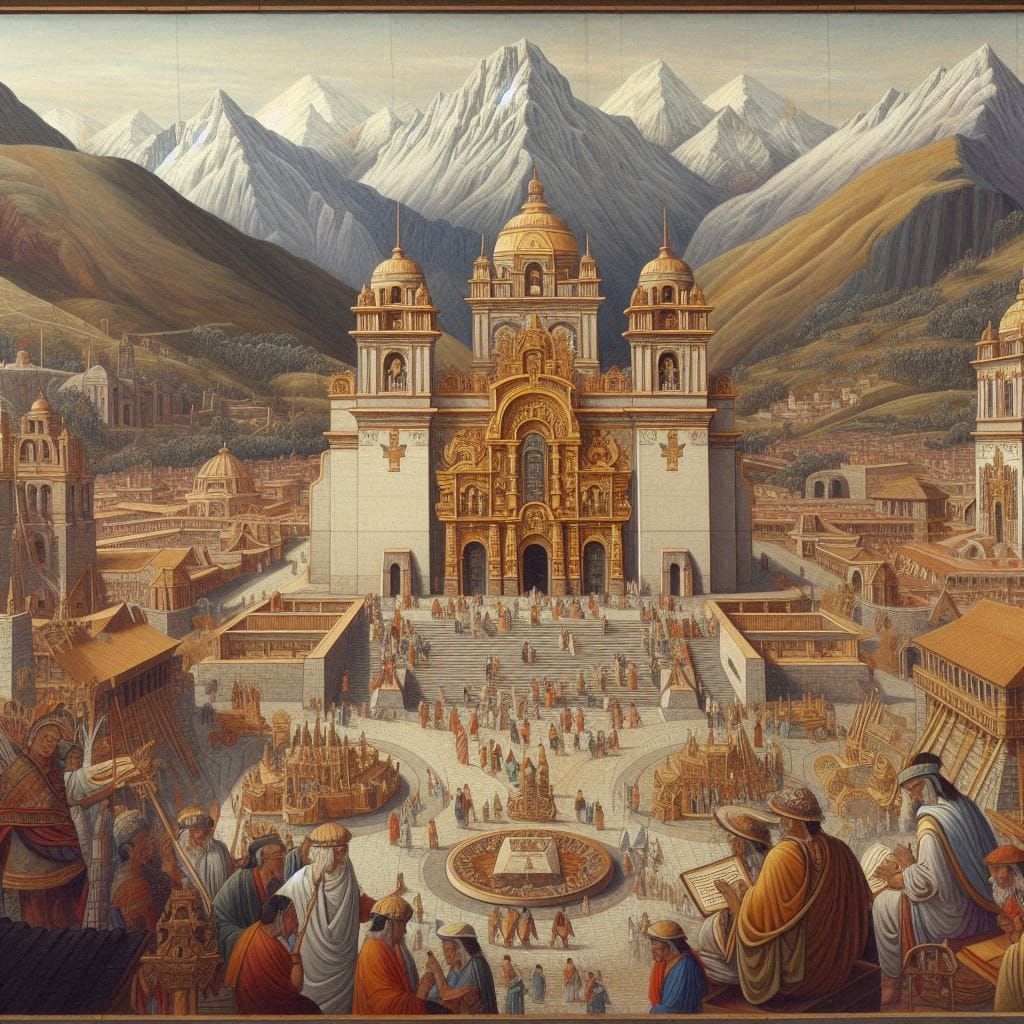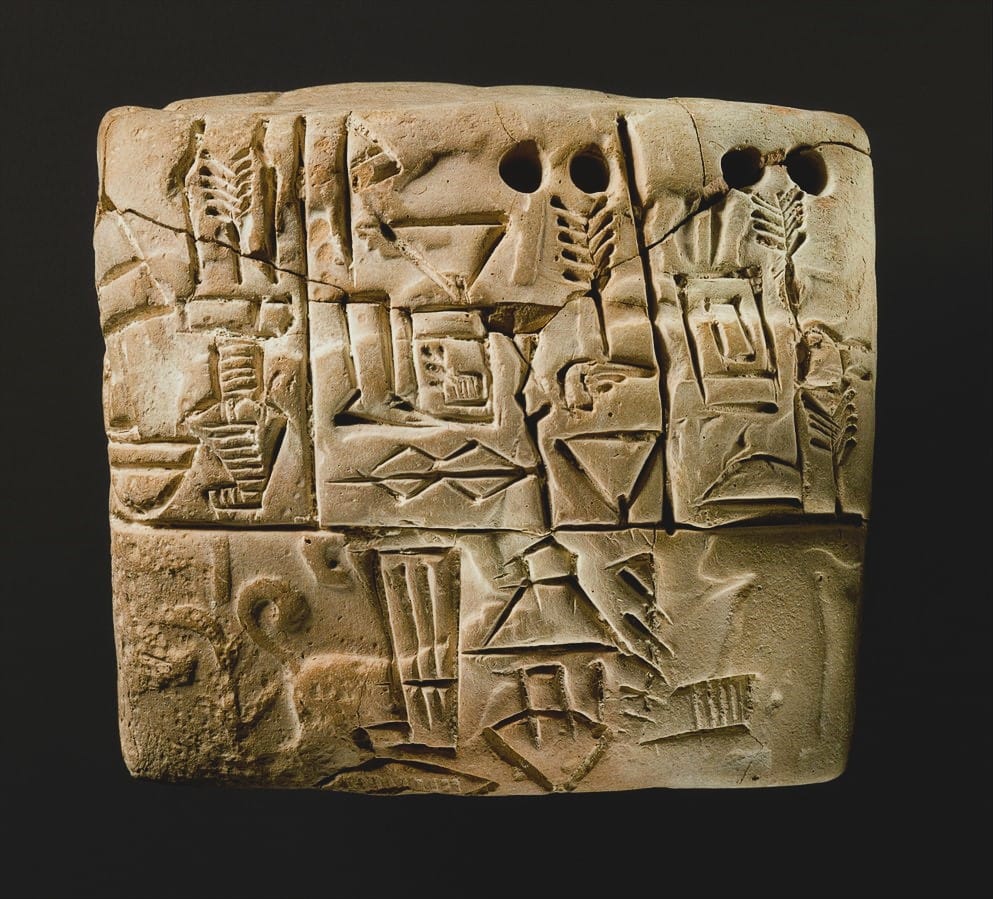Introduction: The Significance of the Inca Khipu
The Inca Khipu, one of the most enigmatic tools in history, served as the heart of record-keeping in the Inca Empire, allowing them to manage their vast territories without a written language. These “talking knots” were composed of colorful threads and intricate knots, creating a highly organized system capable of storing complex information such as census data, taxes, and agricultural records. Khipus inca allowed the empire to track everything from births and deaths to historical events and tributes.

Unlike the scripts of other ancient cultures like the Egyptians or the Sumerians, the Incas relied on khipus to manage their expansive empire, which at its height stretched across Peru, Ecuador, Bolivia, and Chile. By employing these devices, the Incas effectively ruled one of the largest pre-Columbian empires in the world. Scholars are fascinated by the khipu’s capacity to function as a robust administrative tool. Early Spanish chroniclers described the khipu system with awe, noting that the Incas could govern millions of subjects without needing to write.
Recent research has begun to uncover that khipus were likely used for more than just numerical records. Some scholars propose that khipus could hold encoded historical narratives and even proto-linguistic elements. Although deciphering the full meaning behind these knots remains a challenge, modern technology and ongoing archaeological discoveries continue to shed light on this ancient information system.
The Inca Khipu is not just an artifact of the past—it represents the sophisticated nature of Inca governance and their ability to maintain order across an empire without a written alphabet. It exemplifies how societies can innovate unique systems to solve complex administrative needs, making it a key focal point in Andean studies today. Discover the Inca Khipu, its meaning, and how to read quipu in this exploration of an extraordinary record-keeping system.
What Are Khipus? Understanding Their Structure and Function
The khipus inca were intricate, multi-strand devices designed to store complex data, far beyond the appearance of mere ropes. These devices were typically constructed from cotton or animal fibers, such as alpaca or llama wool, making them lightweight yet durable. Each khipu consisted of a primary cord, from which multiple secondary strings would hang, forming a network of knotted strings. The color of the cords, the knot type, and their placement on the string all held specific meanings.
The quipus meaning can largely be deciphered through its knotting structure. At a basic level, these knots represented numerical values in a base-10 system. A single knot could indicate the number 1, while more elaborate figure-eight knots might denote numbers as high as 10,000. Researchers discovered that the spacing of the knots on each cord conveyed additional meaning—knot placement indicated place values (units, tens, hundreds, etc.). This feature allowed the khipu to function like an abacus, recording everything from crop yields to population data.

Yet, there is mounting evidence that some khipus encoded more abstract information, extending beyond numbers to encompass stories or administrative records. Variations in string color and fiber type might denote different regions, tribes, or commodities. For instance, a red string might symbolize war or military tribute, while a green string could signify maize or another type of crop.
As archaeologists unearth more khipus from different regions of the former Inca Empire, they discover that some may have been used as narrative tools. Scholars believe that quipucamayocs (khipu masters) could “read” these strings, recounting historical events or transmitting oral traditions through this knot-based code.
Despite the immense potential that khipus offer in understanding Inca society, interpreting their full complexity remains an ongoing challenge, as the Spanish conquest led to the near eradication of the quipucamayoc class, resulting in the loss of the oral traditions that could have explained quipus meaning.
The Historical Context of the Inca Khipu
The origins and use of the Inca Khipu are deeply tied to the history of the Inca Empire, which flourished from the 13th century until the Spanish conquest in the 16th century. As the Incas expanded their empire, they faced the challenge of managing a vast and diverse population spread across harsh Andean landscapes. The khipus inca became a pivotal tool for governance, allowing local administrators to report data back to the central government in Cuzco without the need for a written script.

Central to the empire’s success was the mit’a system, a labor tax that required citizens to provide work on public projects such as roads, agricultural terraces, or military service. The khipu was indispensable in keeping track of these obligations, ensuring that each village contributed its fair share of labor. The quipucamayocs—official khipu recorders—were stationed across the empire, and their ability to manage data on population size, crops, and taxes using khipus enabled the Inca rulers to maintain tight control over their domains.
Beyond administrative uses, khipus inca were also used in religious and ceremonial contexts. Some scholars speculate that khipus could serve as mnemonic devices, helping priests or officials recall key historical events, religious stories, or mythologies.

Unfortunately, much of the knowledge surrounding how khipus inca were used was lost after the Spanish invasion. The destruction of these devices and the persecution of the quipucamayocs by the Spanish colonizers aimed to dismantle the core of Inca bureaucratic control, leading to a profound loss of cultural memory. However, what remains continues to inspire scholarly debate and discovery.
How to Read a Quipu: Deciphering the Knots and Strings
The central question of how to read a quipu remains one of the great challenges in archaeology. While much of the quipus meaning has been deciphered—especially in terms of its numerical system—many believe that khipus had the potential to store more sophisticated information. Researchers have categorized the knots into different types, each representing distinct values: single knots signified units, figure-eight knots marked tens, and so forth.
Yet, some khipus don’t align with the numerical systems scholars have been able to decode, indicating that these strings may have encoded qualitative or narrative information. Gary Urton, a leading researcher, has posited that khipus inca might contain binary or even phonetic data, which could mean that the Incas had devised a system that approximated written language. Urton’s studies suggest that certain knots might correlate with syllabic sounds, potentially representing proper names, places, or even events.
Modern technology, including 3D modeling and computer simulations, has become a vital tool in unlocking the mystery of the khipu. By creating digital replicas of these strings and applying algorithmic analysis, researchers can identify patterns that human observation might overlook. Through these efforts, we are inching closer to fully understanding how to read quipu and what deeper layers of meaning these devices might hold.
While no one has entirely cracked the quipu’s code, continued interdisciplinary research offers hope that one day we may unlock all the secrets these knotted strings hold, forever changing our understanding of Inca society.
The Inca Khipu in Modern Research
Recent studies into the Inca Khipu have transformed our understanding of how the Incas encoded information. Research has shown that khipus were used not only for numerical records but may have also encoded narratives, administrative data, and possibly even phonetic elements. Gary Urton’s work proposes that the khipus inca used binary encoding to store data similar to a computer. This suggests khipus had an intricate system of relational values that went beyond simple record-keeping.
Moreover, archaeologists have uncovered khipus in different regions of the former Inca Empire, with variations that reflect localized uses, such as tax collection or crop distribution. Notable khipu discoveries in sites like Caral and Puruchuco have provided a rare opportunity for researchers to analyze intact systems of knots. Some of the most recent advances in khipu research involve combining cutting-edge imaging technologies with ethnographic records from Quechua communities, offering the possibility that we may someday fully decode the information stored in these artifacts.
Collaborations between international scholars and local communities are central to advancing this research. Indigenous oral histories may hold clues about the lost methodologies for interpreting khipus. As more khipus are discovered and decoded, scholars hope to gain deeper insights into the social, political, and economic workings of the Inca Empire, as well as to shed light on the cultural significance of these devices.
Comparative Analysis: Khipus and Other Ancient Record-Keeping Systems
Comparing khipus inca to other ancient record-keeping systems highlights their uniqueness. While other civilizations developed written scripts—like Sumerian cuneiform, Mayan hieroglyphs, or Egyptian papyri—the Incas took a non-linguistic approach. The quipus meaning was expressed through a highly sophisticated system of colored threads, knots, and string placements, making the khipu both a tangible and flexible tool for data recording.

Unlike written scripts that were static, khipus were highly transportable and adaptable. They were not confined to a specific medium like clay or stone but could be worn or carried by runners (chasquis) throughout the vast Inca road system. The quipus meaning was encoded through a combination of knot types—single, long, or figure-eight knots—which corresponded to different units in their decimal system, making khipus highly effective for storing quantitative data such as census or taxation records.
Another comparison is with tally sticks, used in medieval Europe. Tally sticks were essentially a binary form of accounting, similar to how khipus might have been used, but without the complexity of color codes and variable knot patterns. Khipus offered a much richer encoding system, likely capable of recording more complex data than tally sticks. The fact that the Inca khipu may have recorded phonetic elements, as some researchers suggest, points to its potential use as a proto-writing system, comparable to early syllabaries.
While the exact methods of interpreting khipus are still being debated, what sets khipus apart is their flexibility and multifunctionality, providing a record-keeping system that was not only durable but also intricately woven into the fabric of the Inca bureaucracy.
The Cultural Legacy of the Inca Khipu
Though the methods for how to read quipu have largely been lost, the Inca Khipu has left a lasting cultural legacy. In modern-day Peru and Bolivia, the symbolism of khipus persists, not just as an artifact of the past but as a representation of indigenous knowledge systems. Khipus inca are sometimes used in modern education and cultural revival projects to emphasize the ingenuity of pre-Columbian civilizations and the importance of preserving indigenous history.
The khipu system’s survival, albeit in a symbolic form, represents the resilience of Andean culture in the face of colonial disruption. Museums, such as the Museo Nacional de Arqueología, Antropología e Historia del Perú, and academic institutions worldwide are actively working to catalog and preserve khipus, ensuring their place in the narrative of human history.
In contemporary art and media, representations of khipus are becoming more common, serving as a symbol of resistance and identity for many indigenous groups. This renewed interest in the Inca Khipu as a functional yet enigmatic system of record-keeping has encouraged cultural and technological collaboration, with modern scholars and Andean communities working together to decode these ancient objects.
Conclusion: The Inca Khipu’s Relevance Today
The Inca Khipu remains a powerful reminder of the ingenuity of ancient civilizations. As a tool that combined mathematics, color theory, and potentially even a form of writing, the khipu demonstrates the Incas’ advanced understanding of information management. Despite the loss of knowledge on how to read quipu, ongoing research efforts continue to push the boundaries of what we know about the khipus inca.
The khipu’s relevance extends beyond academic curiosity—it informs our understanding of alternative methods for communication and administration in pre-literate societies. As technology evolves, so too do the methods for decoding and preserving ancient knowledge systems like the khipu. The enduring mystery of how the Incas used khipus to manage their empire challenges modern perspectives on writing and record-keeping, urging us to reconsider how we view information systems across history.
Ultimately, the study of the Inca Khipu opens new paths for appreciating the vast array of human innovation in the past, and how ancient knowledge systems may offer solutions to modern challenges in data storage, communication, and governance.
Explore More Ancient Innovations:
If you found this blog fascinating, don’t miss out on these related posts that dive deep into other remarkable ancient technologies and inventions:
- Ancient Acoustic Technologies – Discover how ancient civilizations mastered sound engineering long before modern advancements.
- Roman Concrete Invention – Learn about the innovative building material that gave the Romans their architectural edge.
- Ancient Communication Systems – Explore the evolution of communication methods used by early civilizations.
- The Han Dynasty Seismograph – Uncover the story behind one of the earliest earthquake detection devices ever made.
Check them out to expand your understanding of these groundbreaking ancient technologies!






